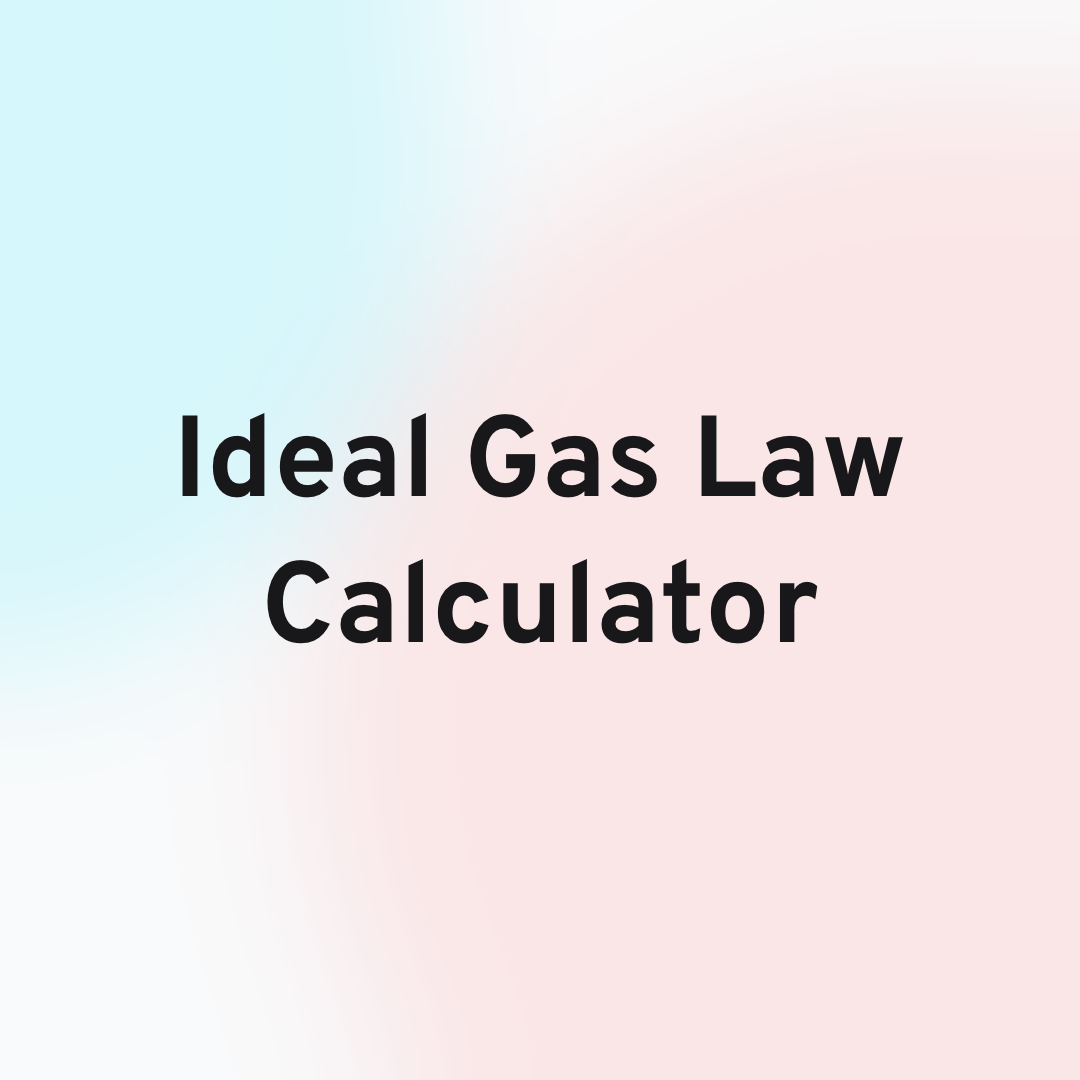
Physics
Thermodynamics
Charles Law Calculator
Quickly and accurately calculate gas volume changes at different temperatures using the Charles Law Calculator
Boyle’s law is an ideal gas law that states that the pressure of a gas is inversely proportional to the volume when the temperature and the amount of gas are constant. So, as the pressure increases, the volume decreases, and vice versa. Using Boyles law calculator, you can calculate the decrease in volume for a fixed increase in pressure for a fixed mass of gas at a fixed temperature.
Using Boyle’s Law calculator, we can find out the initial pressure and volume of a gas as well as the final pressure and volume of the gas by inputting the other variables required for the calculation.
The variables in the calculator include
Initial pressure (P1) The initial pressure of the gas
Initial volume (V1)
The volume is taken up by the gas initially
Final pressure (P2)
The final pressure after changing the volume of the gas
Final volume (V2)
The final volume after changing the pressure of the gas
Boyle’s law is one of the ideal gas laws, which states that the pressure exerted by a gas is inversely proportional to its volume, given that the mass and temperature are kept constant.
When the volume decreases, the particles or molecules of the gas are pushed closer together, increasing the gas’s pressure and vice versa.
Therefore, Boyles’s law can be used to compare the different conditions of the gas, like different pressures and volumes.
Boyle’s law was formulated by a physicist called Robert Boyle in 1662.
Boyle’s law relationship in equation form is given by the following equation
Where,
p → pressure of the gas
v → volume of the gas
k → a constant that depends upon only the mass and temperature of the gas, given as
n → The amount of gas in the number of moles
R → Ideal Gas Constant, its value is 8.31446261815324 J/mol K
T → Absolute temperature in Kelvin
Boyles’s law used to compare changing pressure and volume of a gas is given by the following formula.
P1 → initial pressure of the gas
V1 → initial volume of the gas
P2 → final pressure of the gas
V2 → final volume of the gas
Given a sample of oxygen gas has a volume of 500 ml and a pressure equal to 400 kPa. The gas is allowed to expand into a 1.5 L container. Calculate the new pressure of the gas.
The new pressure of the gas can be calculated by using the following formula
According to Boyle’s Law, a gas’s pressure and volume are inversely related; as the pressure rises, the volume falls, and vice versa, given that temperature is held constant. This is because of the kinetic energy of the movement of the gas particles.
Boyle’s Law is used in various everyday applications such as the functioning of gas-powered engines, air conditioning and heating systems, and scuba diving equipment. So, understanding and applying Boyle’s Law can help understand how changes in pressure, temperature, and volume affect the behavior of various gases.
The mathematical equation for Boyle’s Law is PV = nRT, where P is pressure, V is volume, n is the number of moles of gas, R is the ideal gas constant, and T is the temperature in Kelvin.
Boyle’s Law applies to all types of gases under similar temperature and pressure conditions. However, it does not apply to liquids or solids as they do not have the same level of compressibility as gases.

Physics
Thermodynamics
Quickly and accurately calculate gas volume changes at different temperatures using the Charles Law Calculator

Physics
Mechanics
Our Velocity calculator will help you calculate the object's velocity based on position and time values under constant acceleration.

Physics
Mechanics
Calculate free fall velocity and height. Input initial velocity, height, and time into our free fall calculator to obtain precise results.

Physics
Mechanics
Quickly and precisely calculate the density of an object by using our density calculator. Input mass and volume of the object to find out.

Physics
Mechanics
Calculate pressure with our nifty Pressure Calculator. Input force and area to obtain precise pressure value in pascals.

Physics
Thermodynamics
Easily calculate the pressure, volume, temperature, and quantity of an ideal gas using our nifty ideal gas law calculator!